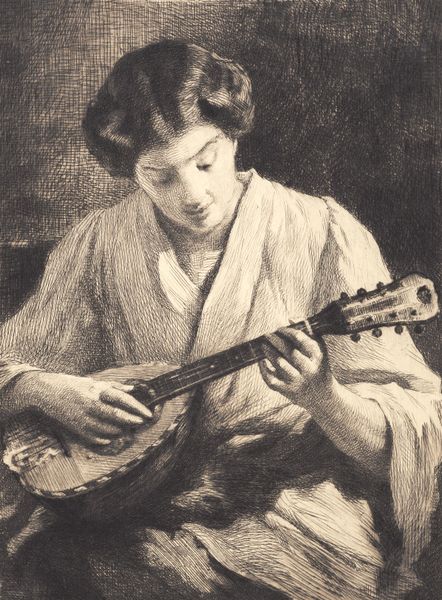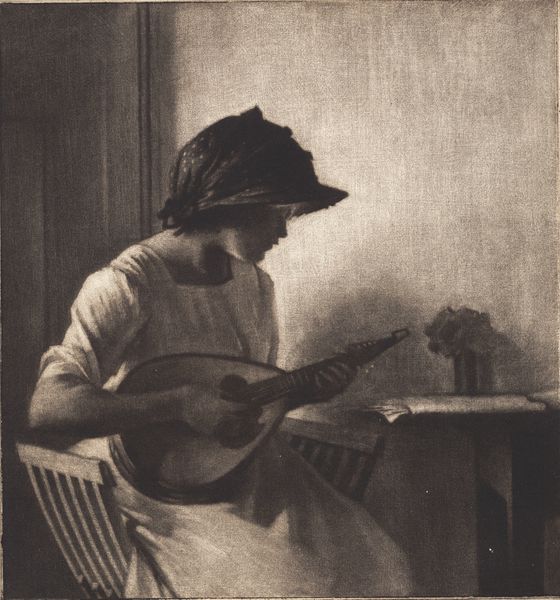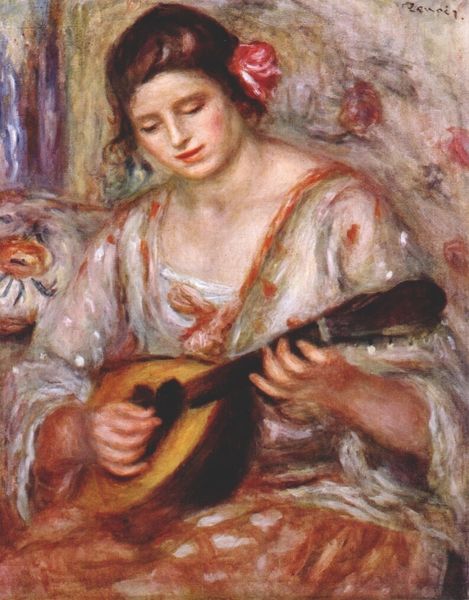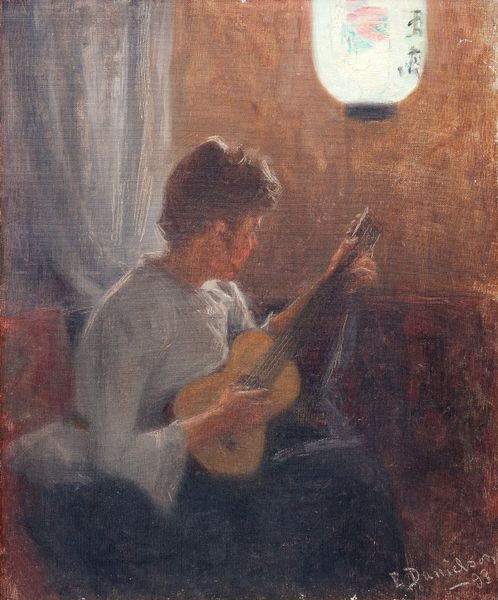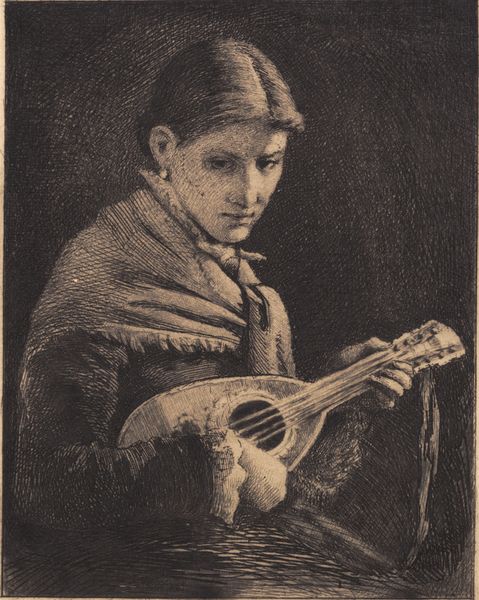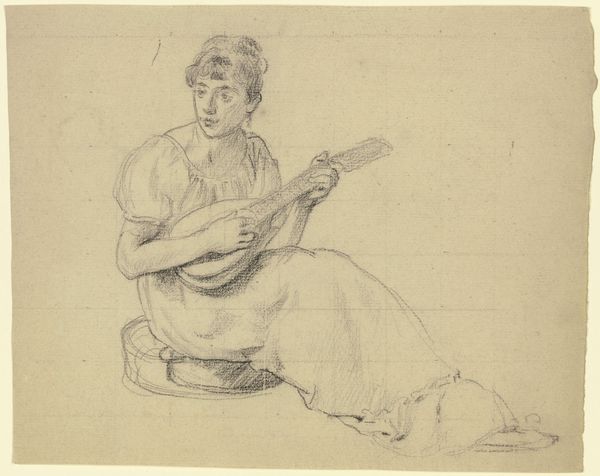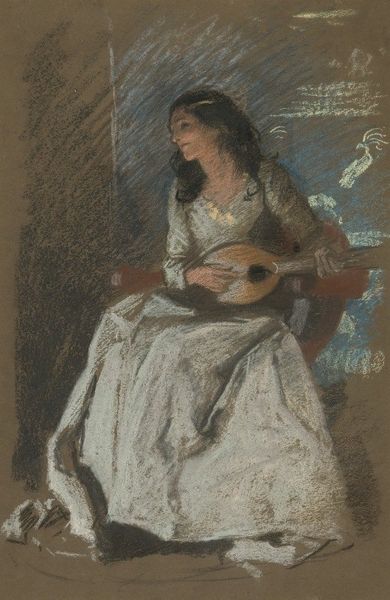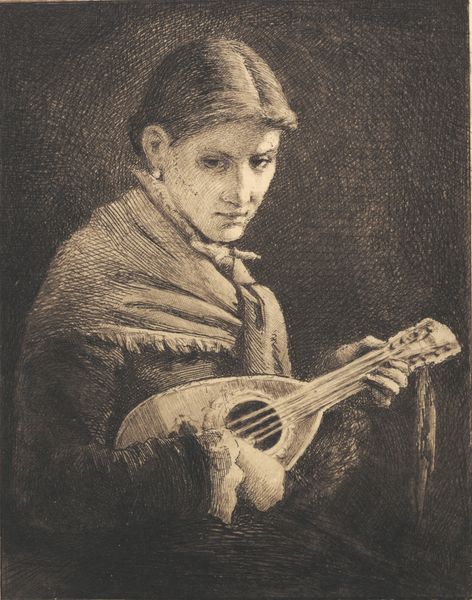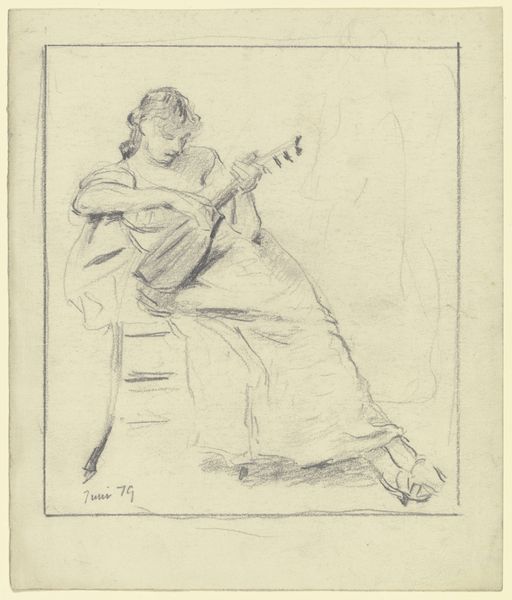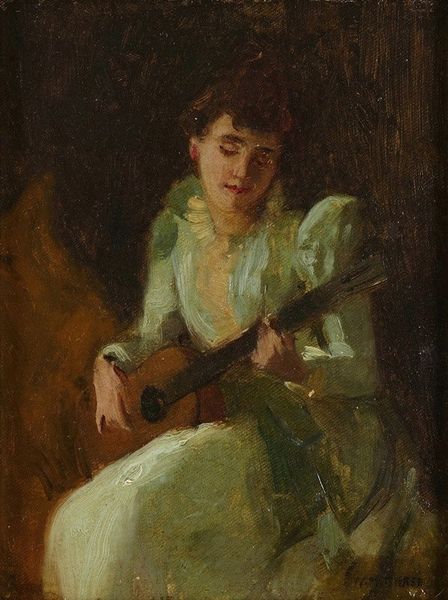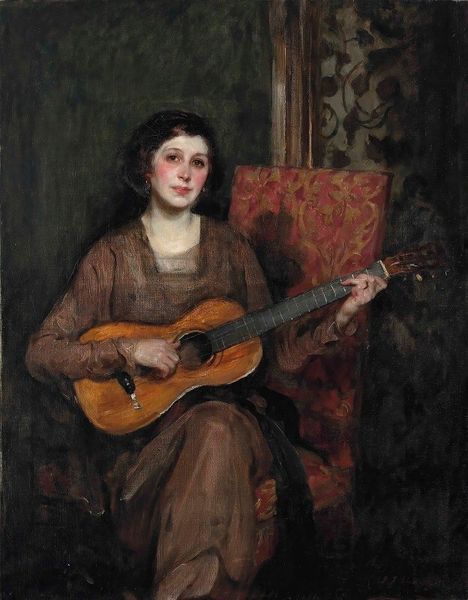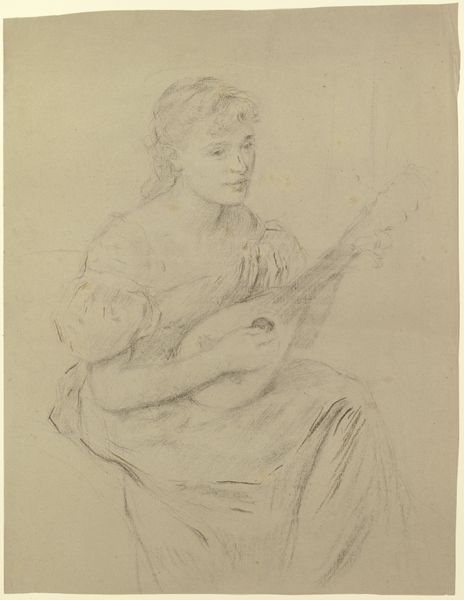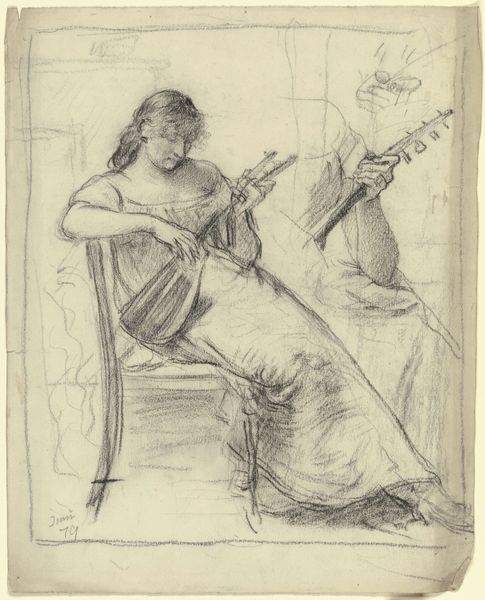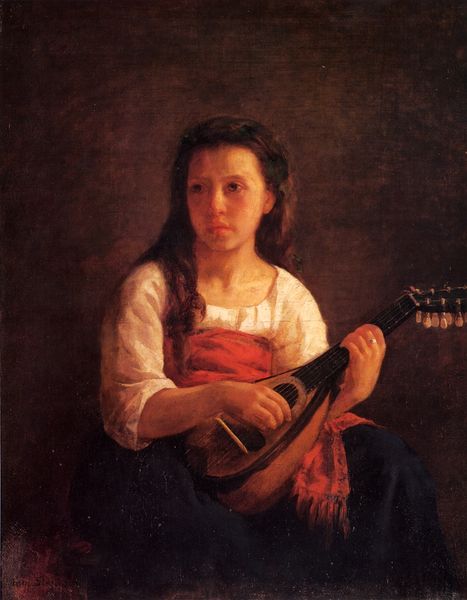
print, etching
#
portrait
# print
#
etching
#
genre-painting
#
realism
Dimensions: 222 mm (height) x 170 mm (width) (plademaal)
Curator: This etching by Frans Schwartz, titled "Mandolinspillende dame," which translates to "Lady Playing Mandolin", dates roughly from 1865 to 1917, and can be found at the SMK, the National Gallery of Denmark. Editor: My first impression is one of quiet intimacy. The limited tonal range and the subject's downward gaze create a very private atmosphere. Curator: Indeed. Considering the period it was created, that private moment has everything to do with contemporary social constraints, and artistic choices. The etching itself, the conscious act of reproducible images, it lends a quiet nod to a form of cultural leveling. Schwartz, though perhaps unintentional, gave voice to this figure, accessible to more than an elite gaze. Editor: I appreciate that perspective. Seeing this piece within a broader historical and social framework really adds depth. I think her posture, the soft curve of her back, can also be interpreted as the subject embodying idealized femininity in contrast with women engaged in direct struggles for equality. There's a quiet resignation present, reflecting the constraints placed upon women. Curator: That is quite valid, and certainly what the artist or commissioner would want you to see and feel. We should not underestimate the value in images of domesticity, even if romanticized. The details of the etching emphasize the very act of making, as labor. And the labor has dignity. The dark tones surrounding the woman isolate her within her world, both literally and metaphorically highlighting that very labor. The dark space behind her serves as her atelier. Editor: I understand what you are saying but her identity, even her status, seems tied up in her skill, in her ability to perform in the private sphere and entertain in domestic settings. Are we romanticizing what appears to be art's historical function, here, of creating this aspirational figure? Or worse, of assigning these values in the 21st Century. Curator: It is such a compelling argument because images are not always what we make them out to be. However, by allowing the discourse to include gender and class critique, in both eras of viewing and experiencing the piece, allows "Mandolinspillende dame" to become relevant. The act of music and art can then challenge traditional power structures. It helps that the piece doesn't romanticize a real person, as portraiture does. It makes that connection easier to navigate for the 21st century audience. Editor: Yes, it's precisely those layers of context, that intersectionality of ideas and concepts that keep art alive. Curator: Thank you, that was most enlightening!
Comments
No comments
Be the first to comment and join the conversation on the ultimate creative platform.
